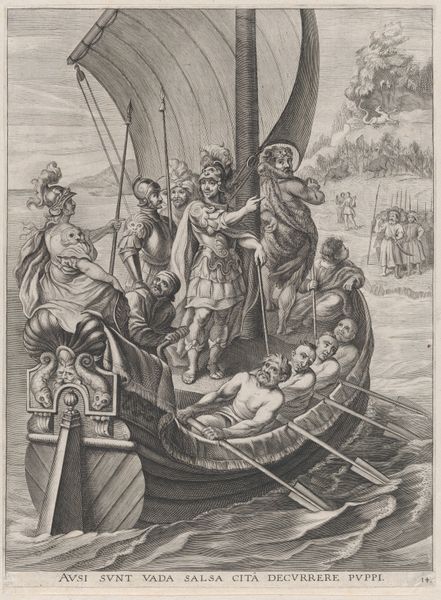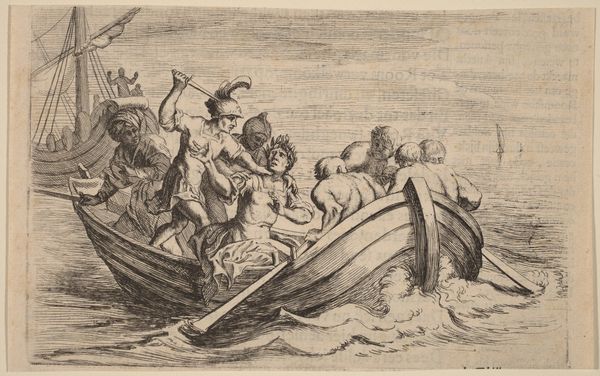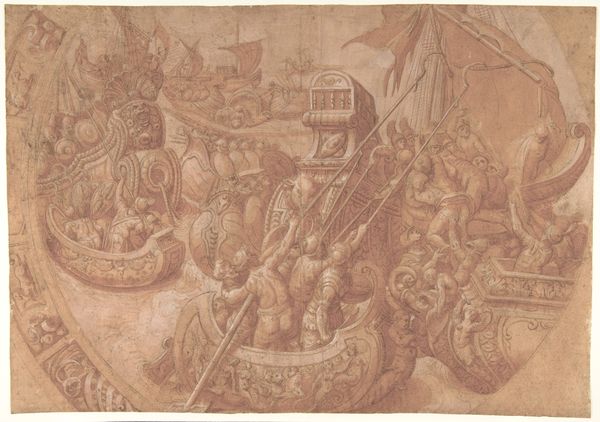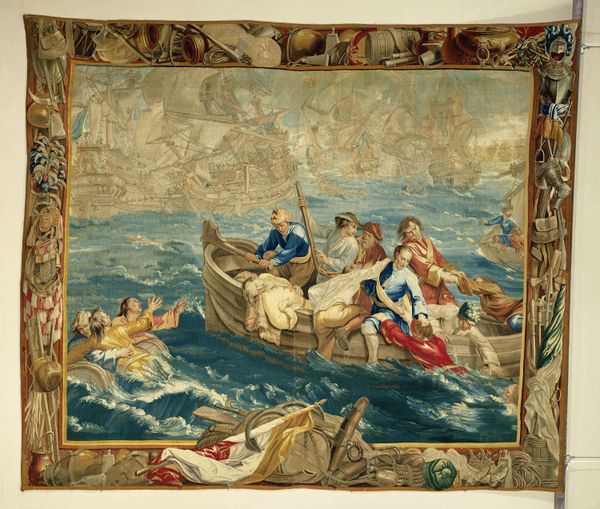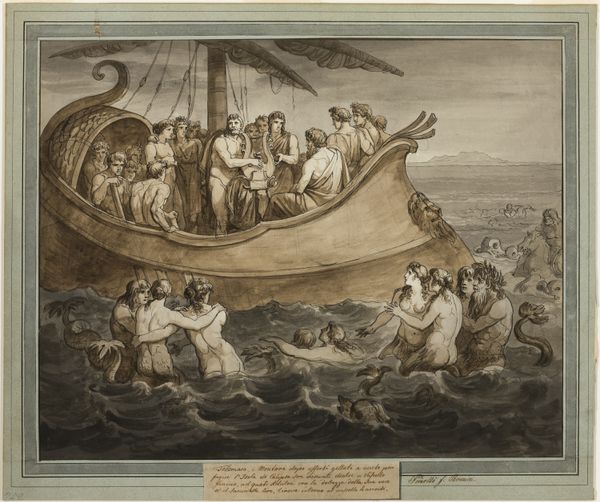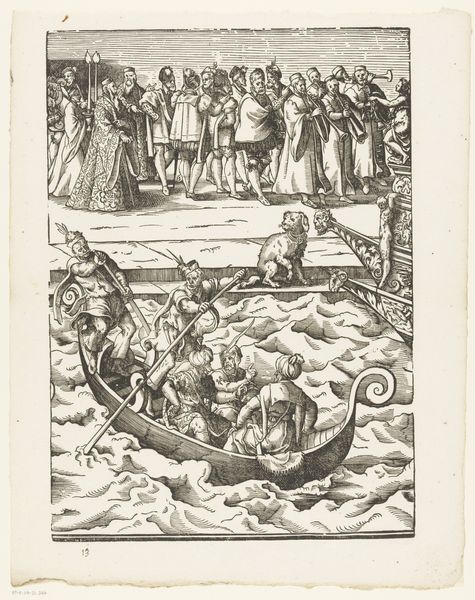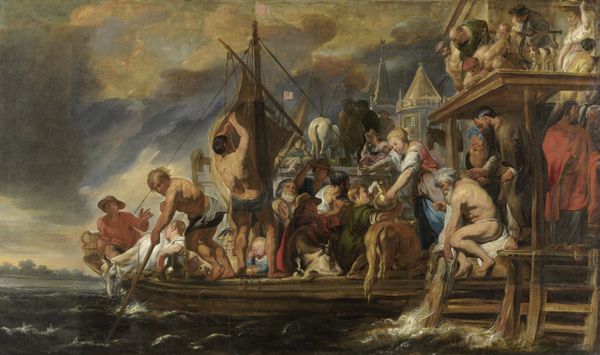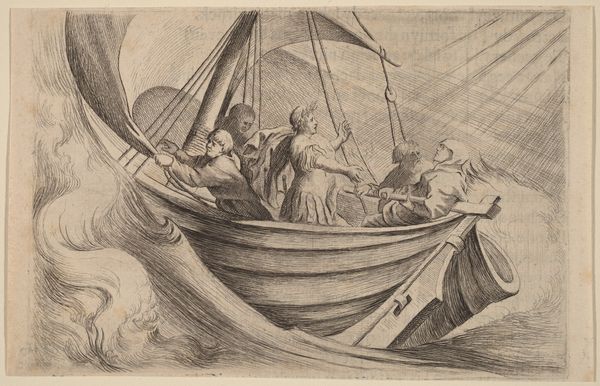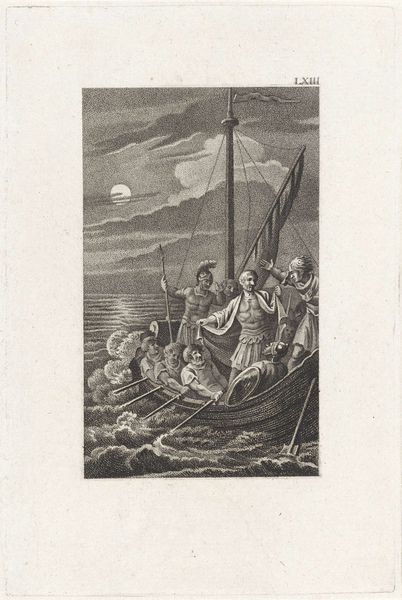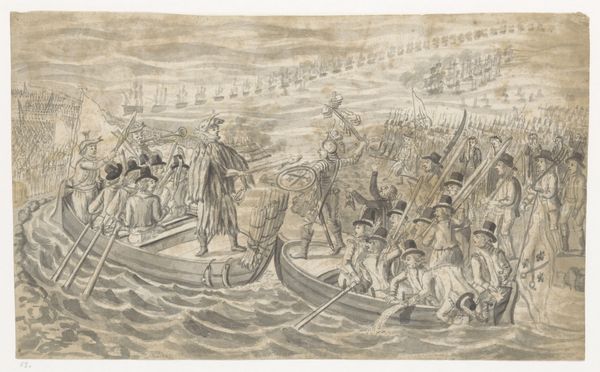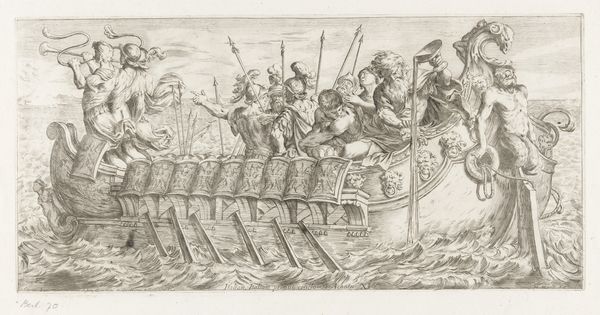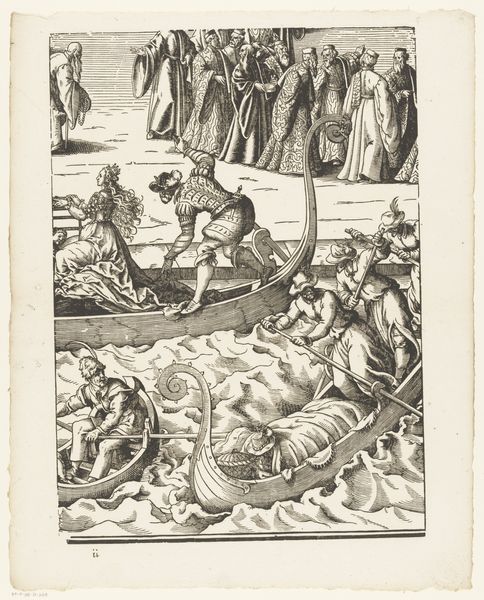
painting, oil-paint
#
painting
#
oil-paint
#
mannerism
#
oil painting
#
genre-painting
#
history-painting
#
academic-art
#
mixed media
#
watercolor
Dimensions: height 2480 mm, width 2570 mm, thickness 40 mm, height 260 cm, width 264 cm, depth 5.2 cm
Copyright: Rijks Museum: Open Domain
Curator: Here we have Michiel Coxie's oil painting, "Landing van Scipio Africanus bij Carthago," circa 1555. The piece is currently housed here at the Rijksmuseum. Editor: Immediately, I am struck by the slightly muted, almost faded palette. It lends a feeling of antiquity, appropriate given the subject matter, though slightly unsettling for such an action-packed scene. Curator: The artist masterfully uses Mannerist conventions here. Note the somewhat elongated figures, the complex poses, and the compressed spatial arrangement – typical of the style. The painting has an almost tapestry-like flatness despite the attempt at representing depth with the receding shoreline. Editor: And consider the symbolism woven into the scene. Scipio Africanus, landing at Carthage, is not merely a historical event; it represents the triumph of Rome, of order over chaos, of civilization over perceived barbarity. The Lion head on the boat probably alludes to strength and sovereignty, further emphasizing Roman power. Curator: Absolutely. Observe how the composition itself reinforces this. The figures are tightly grouped, almost interwoven, creating a sense of unified force driving towards the distant city, and each character expresses the perfect dramatic expressions and perfect muscled body we can expect to see during the late Renaissance in Italy. Editor: But also look at the potential subversion here. The sea is turbulent, threatening, suggesting that even such a powerful figure as Scipio is at the mercy of larger, unpredictable forces. Are those apprehensive expressions I am spotting here and there on some soldiers? This element introduces an almost palpable vulnerability and doubt regarding any potential success. Curator: An astute observation. And consider the color choices within this turmoil. While muted, the contrast between the warm tones of the figures and the cooler tones of the water create visual tension. It also pushes us toward those ideal shapes once again that reinforce their divinity as figures on a heroic landscape, if you will. Editor: I’d argue the power of "Landing van Scipio Africanus bij Carthago" resides in its layering of symbolic and emotional meanings; at the one end a statement of ambition and destiny but also of uncertainty. Curator: From a formal point of view, Coxie has clearly displayed artifice. This self-consciousness actually creates an additional stratum of historical contemplation which leads to more and more contemporary appreciation. Editor: Ultimately, it’s a fascinating dialogue between intention and execution. It leaves me thinking about how even seemingly triumphal narratives can be fraught with subtle anxieties and warnings, though, of course, the actual warning comes to me in modern terms. Curator: Precisely! Such ambiguity is why these formal characteristics provide unique visual experiences even hundreds of years after.
Comments
No comments
Be the first to comment and join the conversation on the ultimate creative platform.
